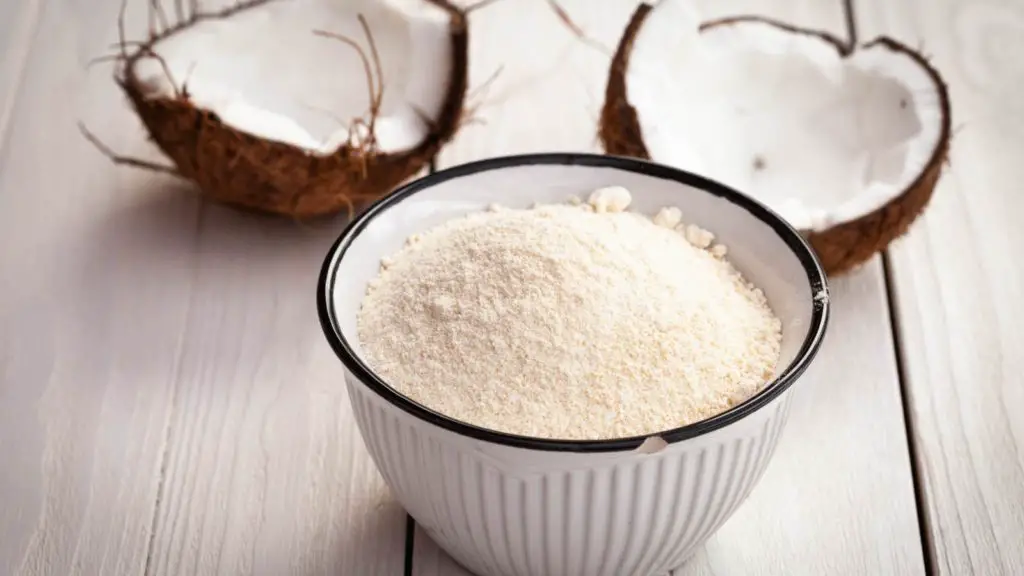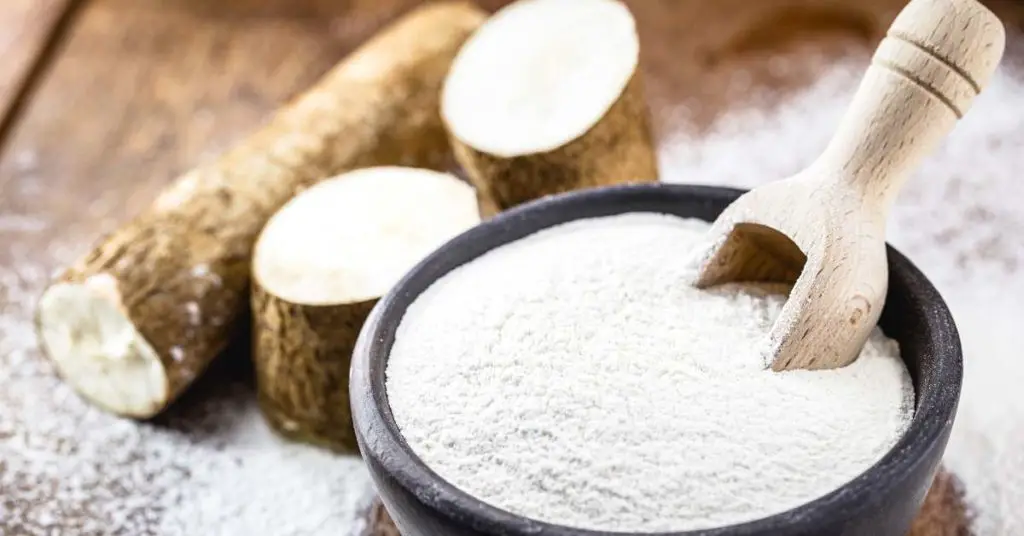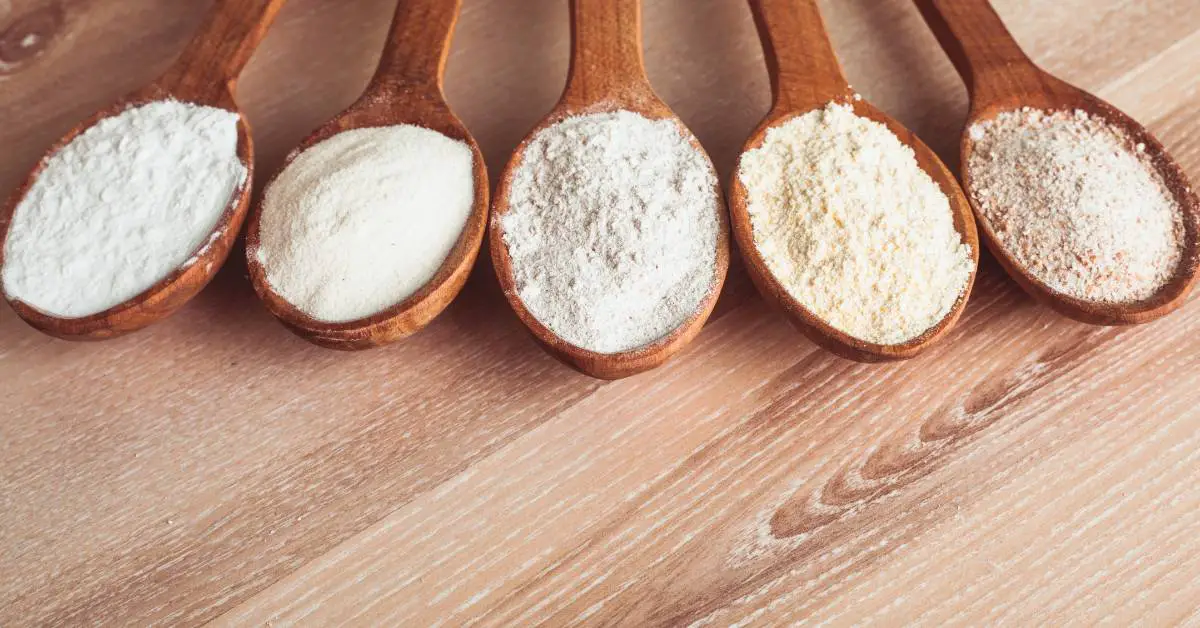What flour is low histamine? Welcome to the world of histamine intolerance and the impact it can have on your dietary choices. If you’re dealing with histamine intolerance, you have to be mindful of the foods you put on your plate with histamine intolerance to avoid histamine intolerance symptoms.
There’s even some evidence that histamine intolerance begins in the gut. (3) That’s not surprising when you consider that our tiny gut bugs influences our immune system. Research shows that people with histamine intolerance have higher levels of intestinal dysbiosis, bad gut bacteria. Histamine intolerance sufferers, according to research, may also have histamine-producing bacteria. (5)
When it comes to histamine intolerance, one of the key aspects to consider is the foods you consume. A low-histamine diet is the gold standard for managing HIT and can help you confirm the diagnosis.(4)
Once you know that high-histamine foods trigger your symptoms, you can adopt a low-histamine diet that won’t worsen your symptoms.
But today, we’ll focus on one specific aspect: flour. You may wonder, “What flour is low histamine?” Well, the answer is not as straightforward as you think. So, let’s dive in and unravel the mysteries of histamine and flour together.
The Histamine Content of Flour
Different types of flour and even gluten-free alternatives may contain varying levels of histamine. Factors like the freshness of the grains, processing methods, and storage conditions can all impact the histamine content of flour. So, the amount of histamine in various flours may differ based on these factors .
Barley, rye, and wheat contain gluten, which is problematic if you have celiac disease or gluten sensitivity. For some people, trypsin inhibitors in these grains can trigger symptoms too. (1) However, wheat flour isn’t known to be high in histamine. Still, if you’re allergic or sensitive to wheat or gluten, you’ll need to avoid it for that reason.
Now, let’s explore different types of flour and their potential histamine content, as well as some tips on selecting flour that aligns with a low histamine diet. The goal is to uncover the best options for your culinary adventures.
Types of Low-Histamine Flour
What flour is low histamine? When searching for low-histamine flour options, consider all the factor that can affect its histamine content.
First, freshly milled flour is your best option and should have lower histamine content than commercially processed flours. Freshly ground flour from grains or seeds can help minimize your potential histamine load.
Some flour types that are less likely to trigger histamine intolerance symptoms are ones made from grains like buckwheat, millet, quinoa, and amaranth. These grains are known for their lower histamine content, and, unlike wheat, contains no gluten.
Alternative Low-Histamine Flour Types
Along with flour made from the grains mentioned earlier, you have other low-histamine options. These include coconut flour, made from dried coconut meat, and tapioca flour, derived from the cassava root. These alternative flours are generally well-tolerated and less likely to trigger histamine-related symptoms.
Seed flours, like chia seed and flaxseed flour. are other low-histamine flour options that are unlikely to trigger histamine intolerance symptoms. Therefore, they can be a good choice if you’re sensitive to histamine.
Check labels and avoid flour blends containing chickpea/garbanzo bean flour, pea protein, or other bean flours as these are higher in histamine.
Here’s a list of low-histamine flour options that are safe for most people with histamine intolerance:
- Chia seed flour
- Flaxseed flour
- Coconut flour
- Buckwheat flour
- Millet flour
- Quinoa flour
- Amaranth flour
- Tapioca flour
- Casava root
- Coconut flour

Understand the Limitations of Low-Histamine Flour
While opting for low histamine flours can be advantageous for individuals with histamine intolerance, understand their limitations.
Low histamine flours may have different textures and behaviors compared to traditional wheat flour.
They can result in denser baked goods or require adjustments in recipes to achieve the desired consistency and taste.
And as mentioned, whether you have access to these low-histamine alternatives depends on your location. Head to your local natural food market (they usually have the best selection of alternative flour sources) and see what’s available to you.
By considering the histamine levels in flour and exploring alternative options, you can find suitable flour choices that align with your histamine intolerance diet.
Incorporating Low Histamine Flour into Recipes
When using low histamine flours in your recipes, you may need to adjust quantities to ensure the best results. Low histamine flours have different absorption and binding properties, so you may need to modify the liquid-to-flour ratio or add additional binding agents like xanthan gum or psyllium husk to achieve the desired texture.
For example, coconut flour, although low in histamine, absorbs water, so you’ll need to consider that. A good rule of thumb is to substitute about 1/4 to 1/3 cup of coconut flour for 1 cup of wheat flour in your recipes.
Experimentation is key when adapting recipes to use low histamine flours.
Consider starting with simpler recipes to familiarize yourself with the behavior of the chosen flour. You can always advance to more complex dishes as you gain confidence and understand how the flour interacts with other ingredients.
Explore the Versatility of Low-Histamine Flour Options
One of the exciting aspects of using low histamine flours is their versatility in various dishes. While they work well for baking, you can also use them in savory dishes and alternative grain-based options.
Low histamine flour like buckwheat, quinoa, or coconut flour can add a unique flavor and texture to pancakes, waffles, cookies, and muffins.
In savory dishes, consider using low histamine flours for breading, thickening sauces, or making gluten-free wraps. For example, buckwheat flour can be a wonderful choice for creating gluten-free noodles or pasta.
For example, you can use tapioca flour, with its binding properties, to make dumplings or as a gluten-free alternative for pizza dough.

Tips for Using Low-Histamine Flour in Recipes
To ensure successful baking with low histamine flours, here are some helpful tips:
- Combine low histamine flours: Experiment with blending different low histamine flours to achieve a better texture and taste. Combining flours like almond flour with coconut flour or buckwheat with quinoa flour can yield excellent results.
- Adjust moisture levels: Low histamine flours may require adjustments in the moisture content of your recipes. If the batter appears too dry, add a small amount of liquid, such as dairy-free milk or applesauce, until the desired consistency is reached.
- Consider adding binding agents: Some low histamine flours lack gluten, which provides structure and elasticity in baked goods. Consider adding binding agents like xanthan gum or psyllium husk to improve the texture and binding properties of the dough or batter.
- Allow for extra time and patience: Baking with low histamine flours may require additional time and patience. Be prepared for slightly longer baking times or allow the dough to rest before shaping or baking.
Managing histamine intolerance requires a proactive approach and willingness to experiment with different ingredients. Embrace the opportunity to try new low histamine flours and explore their potential in various recipes.
Through trial and error, you’ll discover the flavors and textures that suit your preferences and dietary needs best.
Also, be careful how you store low-histamine flour. If you store it incorrectly, it can become colonized with bacteria that produce histamine. Store flour in a cool, dry place and in an airtight container.
Have fun trying new low-histamine flour combinations! Stay curious and open-minded on your journey to managing histamine intolerance. Enjoy the journey of discovering new flavors and textures while catering to your histamine intolerance needs.
Choose Low-Histamine Flour Carefully
In conclusion, finding low histamine flour options is crucial if you have histamine intolerance. By selecting flours with lower histamine levels, you can minimize potential symptoms and discomfort associated with histamine intolerance.
Be mindful of the ingredients you use and make informed choices to support your overall well-being.
Every person with histamine intolerance has unique dietary needs and tolerances. So, empower yourself with knowledge and understanding of the foods that work well for your body. By being aware of low histamine flour options and their pros and cons, you can make informed choices that support your health.
Start with small amounts and gradually increase to see how your body reacts. Plus, some flour may be cross contaminated with high histamine foods during processing, so check the labels and choose brands that are certified low histamine if possible.
Gluten cross-contamination is a known problem in some facilities that process both gluten-free and gluten-containing products. (2)
What Flour Is Low Histamine?
Managing histamine intolerance is a continuous process of learning and adapting. With the right approach, you can navigate your dietary choices with confidence and enjoy a fulfilling and delicious culinary experience while managing histamine intolerance. Fortunately, you have low-histamine flour options that shouldn’t worsen your symptoms, but be aware that individual tolerances can vary. So, listen to your body and keep a journal!
References:
- Lexhaller B, Colgrave ML, Scherf KA. Characterization and Relative Quantitation of Wheat, Rye, and Barley Gluten Protein Types by Liquid Chromatography-Tandem Mass Spectrometry. Front Plant Sci. 2019 Dec 13;10:1530. doi: 10.3389/fpls.2019.01530. PMID: 31921226; PMCID: PMC6923249. https://www.frontiersin.org/articles/10.3389/fpls.2019.01530/full
- Cross-Contact (Contamination) with Gluten. (2023). Retrieved 10 June 2023, from https://www.bidmc.org/centers-and-departments/digestive-disease-center/services-and-programs/celiac-center/celiacnow/nutrition-and-the-gluten-free-diet/cross-contamination
- Histamine Intolerance Originates in the Gut. (2023). Retrieved 10 June 2023, from https://www.mdpi.com/2072-6643/13/4/1262
- Histamine Intolerance—The More We Know the Less We Know. A Review. (2023). Retrieved 12 June 2023, from https://www.mdpi.com/2072-6643/13/7/2228.
- Sánchez-Pérez S, Comas-Basté O, Duelo A, Veciana-Nogués MT, Berlanga M, Latorre-Moratalla ML, Vidal-Carou MC. Intestinal Dysbiosis in Patients with Histamine Intolerance. Nutrients. 2022 Apr 23;14(9):1774. doi: 10.3390/nu14091774. PMID: 35565742; PMCID: PMC9102523. https://www.ncbi.nlm.nih.gov/pmc/articles/PMC9102523/


